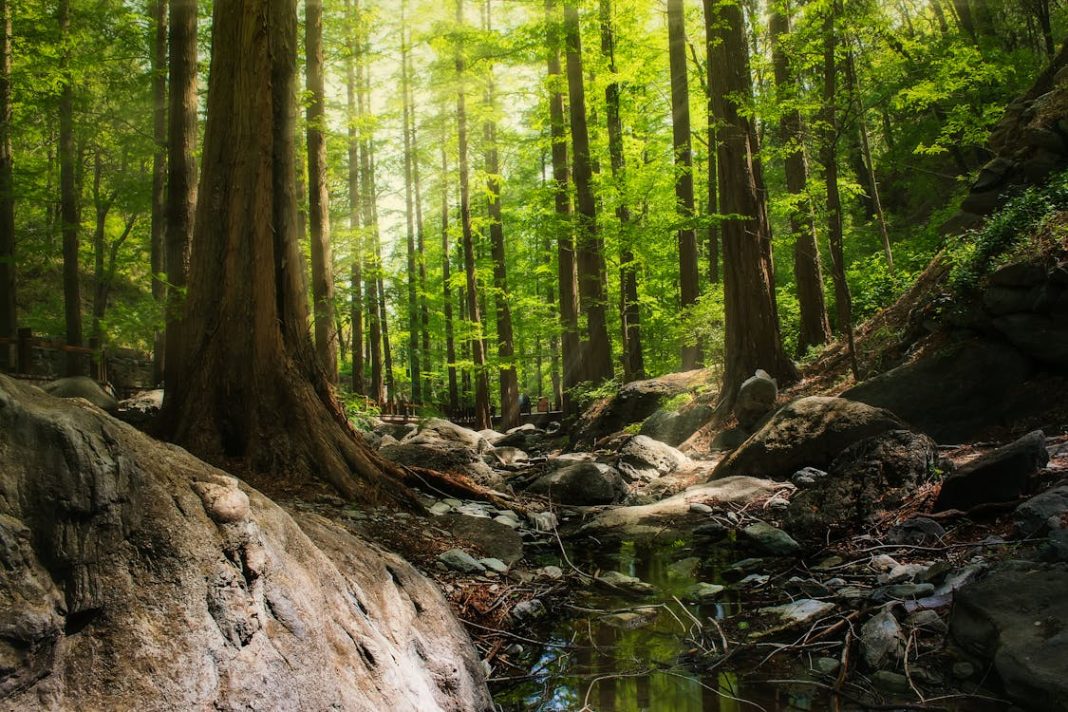Striking the balance between development and conservation of biodiversity has been the hallmark of forest management policy in India. The substantial increase in approval for non-forestry project proposals involving forest diversion on large tracts inside national parks and wildlife sanctuaries in recent years is reflective of this balance being tilted towards development.
The number of projects approved in these protected areas was 71 in 2019–20, which increased to 421 in 2023–24. The huge surge of non-forestry projects inside wildlife sanctuaries and national parks over the past five years has triggered apprehension over the sustainability of biodiversity conservation initiatives.
The inclusion of a significant number of project proposals in Northeastern states involving the clearing of forest areas for non-forestry use on account of the development push has raised concern over the maintenance of ecological balance. Experts worldwide have flagged the challenges of mitigating climate change and have been stressing the need for prioritising conservation and increasing forest cover.
Compensatory afforestation has been integrated into the policy framework to balance the development needs for the socio-economic development of people living on the fringes of national parks and wildlife sanctuaries. It is perceived as a key solution to address the concern of loss of forest cover when undertaking development projects. The experience of poor implementation of compensatory afforestation in the country has allowed the apprehension over the effectiveness of this solution to grow and persist among a section of biodiversity experts and enthusiasts.
The argument placed in support of the approval of an increasing number of project proposals inside the protected areas is that the proposals are scrutinised by a team of environmental, forest, and wildlife experts.
Another key argument is that the experts arrive at their conclusion to grant approval to the proposal after undertaking field surveys and analysing the possible impact on biodiversity of the project area in the national park or the wildlife sanctuary using established scientific tools. Besides, the approval of the project proposals is subject to the implementation of the mitigation measures, including compensatory afforestation and potential human-wildlife conflict.
Infrastructure and development projects attract new settlements of populations seeking to derive socio-economic benefit from them. At one point, the population increase around these projects reaches a stage when it becomes unmanageable for forest departments with inadequate forest guards and a forest protection force to secure the areas from encroachment by people from fringe areas. Encroachment and illegal timber smuggling lead to the clearing of more areas of forest around the project areas, which also leads to further fragmentation of wildlife habitat.
The fragmentation of wildlife habitat inside a forest results in the loss of food and shelter for wildlife, which come out along their natural corridors to fringe areas, giving rise to new hotspots of human-wildlife conflict. Compared to other forest areas, national parks and wildlife sanctuaries have relatively better protection. However, if the area under the non-forestry project keeps rising, the fragmentation of wildlife habitat will potentially lead to a similar situation inside a park or wildlife sanctuary that is observed in the forest fringe or buffer zone.
A viable solution to avoid such an unwarranted situation inside the protected areas can focus on the Eco-Sensitive Zones (ESZ) around the national parks and wildlife sanctuaries. The development activities in ESZ are not prohibitive but regulatory in nature. The ESZ were articulated as “shock absorbers” of the protected areas and created a secured natural barrier in negative interaction between wildlife protected inside a national park or a wildlife sanctuary and the human population settled in the buffer zone.
People living in the notified ESZ areas are allowed to continue with their agricultural and allied activities, construct dwelling houses, set up educational institutions, use renewable energy, and undertake tourism activities, subject to the regulations mentioned in the notification.
Improving the socio-economic condition of people living in such buffer zones of protected areas through better access to education and healthcare, incentivizing solar projects and irrigation facilities to boost farm production, and generating livelihood avenues by supporting weaving and other handloom activities. Protected areas are also key tourism sites, and the and the promotion of homestays in ESZ areas can help augment household income.
The objective of government intervention must be to reduce any form of dependence on forests for households living in these areas and secure their lives with adequate and sustainable livelihood opportunities so that they become the force multiplier of the forest department in the protection of national parks and wildlife sanctuaries.
Traditional agroforestry in these buffer zones can play a crucial role in reminding forest-fringe dwellers about indigenous tree plantations for maintaining the required forest cover and meeting their food and nutrition requirements, which needs to be promoted through welfare initiatives.
As these sustainable development models have already been tested and found to be effective, approval of infrastructure and development projects inside a protected area should be considered only in the most exceptional circumstances in accordance with forest policy and Supreme Court directives.




